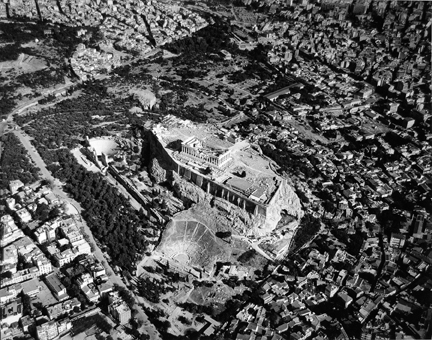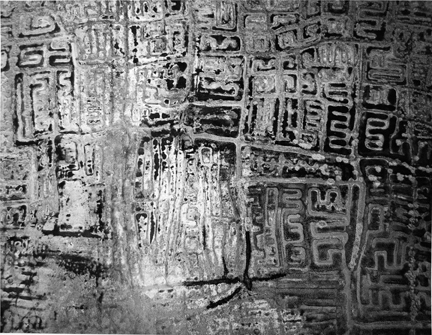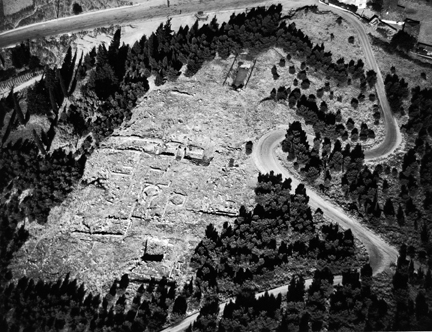About the Photographer
Bridges, Marilyn
American, b.1948
"By consciously maneuvering the aircraft in such a way as to place light and shadow in relationship to material forms, I control the shapes and patterns within the photograph. By maintaining the relationship between tone, shape and texture, the gesture evoked by the symbolic nature of the subject is reinforced. If all this works, then the photograph is alive and meaningful and not merely a record of the charted landscape." – Marilyn Bridges
In 1976, upon seeing the Nazca Indian "runway" lines in Peru, Marilyn Bridges decided to become a pilot. That same year she debuted in the art world with her pictures of those prehistoric ground drawings, and had her first solo show: an exhibition at the Museum of Natural History in New York. Since then she has worked steadily to make black-and-white aerial photographs that evoke the spirit and mystery of archeological sites from Greece to the Yucatán. "Silbury Hill," for instance, is titled for an artificial mound in England notable for its flat top, its height of 130 feet, and a perfectly round base 1640 feet in circumference. It was built beginning in 2,660 BCE and excavated in the 18th and 19th centuries. The origins of the hill, which at more than five acres is the largest man-made prehistoric mound in Europe, are a matter of speculation. "The Equestrian, Mendon, New York," however, varies from the majority of Bridges' photographs in its examination of far more recent and far less monumental changes to the landscape. Made just a year after Silbury Hill, the photograph The Equestrian, Mendon, New York provides the viewer with an uncommon perspective of equestrian fences shaping the rural landscape. The geometry of these fences and a side road that services them seems as arbitrary as it is artificial. The tone and line of the composition are consistent with Bridges' photographs of more exotic or historical locales, but the questions of how people relate to the land and the lasting effects of those relationships take on a different spin.
Bridges is credentialed to fly single- and multi-engine land and sea aircraft, and she even owns her own Cessna, but she does not pilot when she photographs. Waiting for just the right light, she directs the pilot where to fly and when to tilt in angles ranging from low oblique to vertical to get the right picture. The process is technically demanding both in terms of flying--the plane must slow down to just a notch above stalling even at a shutter speed of 1/1000th of a second--and in terms of photographing. Unable to slow the plane any more than she does, Bridges extends the speed of her Tri-X film by pushing it (a development technique). So that her landscapes resonate as land and not as abstractions, she shoots from an altitude no greater than 1000 feet above the earth, and she prefers to get as close as 200 feet. She usually shoots with a 6×7 Pentax medium-format camera, sometimes a Leica 35mm, and always from an open window.
Born in New Jersey on December 26, 1948, Marilyn Bridges has lived in San Francisco and Hawaii, traveled the world, and now resides in Rochester, New York. She received her Bachelor of Fine Art and Master of Fine Art from the Rochester Institute of Technology. Currently, Bridges is a partner with Photopia, a general photography/aerial photography studio in Rochester. She received a John Simon Guggenheim Memorial Foundation Fellowship in 1982, a CAPS grant in 1983, a National Endowment for the Arts grant in 1984, and a Fulbright Grant in 1988-9. Her photographs are in numerous collections including the American Museum of Natural History, New York; Aperture Foundation, New York; Bibliothèque Nationale, Paris; Center for Creative Photography, University of Arizona, Tucson; Metropolitan Museum of Art, New York; Musée de la Photographie, Charleroi, Belgium; and Museum of Modern Art, New York.



